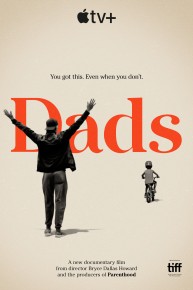
Nuclear Nightmare: Inside the Cuban Missile Crisis
Where to Watch Nuclear Nightmare: Inside the Cuban Missile Crisis

Nuclear Nightmare: Inside the Cuban Missile Crisis is a gripping documentary that delves deep into one of the most perilous moments in modern history: the Cuban Missile Crisis of 1962. This film meticulously examines the political, social, and military factors that converged during a standoff that brought the world to the brink of nuclear annihilation. Through a combination of archival footage, expert interviews, and in-depth analysis, the documentary illuminates the events that transpired over those 13 harrowing days.
The narrative begins by setting the stage, providing background on the Cold War climate that framed U.S.-Soviet relations in the early 1960s. At the time, both superpowers were embroiled in an intense arms race, characterized by mutual distrust and the ever-looming threat of nuclear weapons. The film contextualizes the strategic significance of Cuba to the Soviet Union, particularly after Fidel Castro's rise to power and his alignment with communism. This political backdrop is essential for understanding why the placement of Soviet nuclear missiles on the island provoked such a fierce U.S. response.
As the documentary progresses, it chronicles the discovery of the missiles by American reconnaissance flights over Cuba. The pivotal moment of the crisis is deftly portrayed, with the film capturing the initial shock and urgency felt by President John F. Kennedy and his advisors as they grappled with the implications of this discovery. The film provides a comprehensive look at the decision-making processes within the U.S. government, exploring the debates among Kennedy’s Executive Committee (ExComm) as they weighed options for dealing with this unprecedented threat.
One of the film's strengths is its focus on the human elements involved in the crisis. Through personal accounts and testimonies from historians and military experts, viewers gain insight into the intense pressure exerted on national leaders as they contemplated actions that could lead to nuclear war. The film highlights the various perspectives within the Kennedy administration, illustrating the tension between hawks advocating for military action and doves promoting diplomatic solutions. This internal conflict serves to underscore the complexity of crisis management in political leadership.
Additionally, the documentary delves into the timeline of events, mapping out key moments during the standoff. From the establishment of a naval blockade around Cuba to the diplomatic negotiations that unfolded behind the scenes, the film vividly portrays the high-stakes chess match being played by both the United States and the Soviet Union. It emphasizes the tightrope that both sides walked—each decision made in Washington or Moscow had the potential to alter the course of history irrevocably.
Another crucial aspect explored in the film is the role of communications and miscommunications during the crisis. The documentary reveals how critical misinterpretations could have led to disaster, illuminating the fragility of human judgment in high-pressure situations. Through dramatic reenactments and expert commentary, the film examines the various channels of communication that exist during such intense diplomatic standoffs, highlighting the importance of accurately interpreting intentions and signals.
Moreover, Nuclear Nightmare delves into the broader implications of the Cuban Missile Crisis on international relations and nuclear policy. It explores how the events of 1962 reverberated through subsequent decades, shaping U.S.-Cuban relations and influencing the strategies adopted by both superpowers in approaching nuclear arms control. The film raises pertinent questions regarding the nature of power, deterrence, and security in a rapidly changing world.
Visually, the documentary employs a range of historical footage, including news broadcasts, military statements, and personal letters, enhancing the narrative with vivid imagery and first-hand accounts. This dynamic presentation not only keeps the audience engaged but also reinforces the gravity of the situation that was unfolding. The emotional weight of the choices being made is palpable, leaving viewers to reflect on what might have been had decisions been swayed in another direction.
In closing, Nuclear Nightmare: Inside the Cuban Missile Crisis is a thought-provoking exploration of a moment that defined an era, exposing the delicate dance of diplomacy, power, and human fallibility. By unpacking the complexities and tensions of the Cuban Missile Crisis, the film encourages audiences to contemplate the lessons learned and the implications that persist in today’s geopolitical environment. Ultimately, it stands as a powerful reminder of the fragility of peace in a world where the specter of nuclear conflict remains a daunting reality.
Nuclear Nightmare: Inside the Cuban Missile Crisis is a Documentary movie released in 2013. It has a runtime of 4800.
How to Watch Nuclear Nightmare: Inside the Cuban Missile Crisis
Where can I stream Nuclear Nightmare: Inside the Cuban Missile Crisis movie online? Nuclear Nightmare: Inside the Cuban Missile Crisis is available to watch and stream, buy on demand, download at Amazon. Some platforms allow you to rent Nuclear Nightmare: Inside the Cuban Missile Crisis for a limited time or purchase the movie for downloading.




















